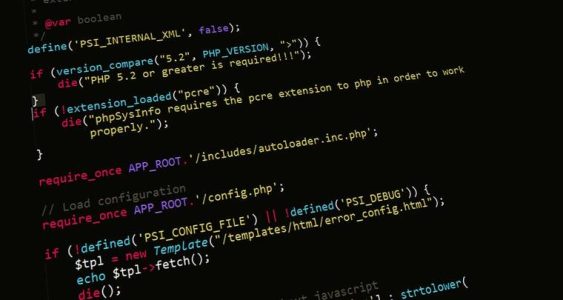Welcome to the exciting world where PHP meets Big Data! In today’s digital age, the vast amount of data generated daily is both a goldmine and a challenge. As businesses strive to harness this wealth of information, ensuring its accuracy and quality through data cleansing becomes paramount. Join us on a journey through the realm of PHP and Big Data as we explore techniques for refining and enhancing your data for optimal performance. Let’s dive in!
Importance of Data Cleansing in Big Data
In the realm of Big Data, the importance of data cleansing cannot be overstated. As vast amounts of information flow in, ensuring its accuracy and reliability is crucial for making informed decisions.
Data cleansing helps eliminate errors, duplicates, and inconsistencies that can skew analysis results. By refining raw data into a clean and structured format, businesses can unlock valuable insights that drive growth and efficiency.
Without proper data cleansing techniques in place, organizations risk compromising the integrity of their analytics efforts. Inaccurate or incomplete data can lead to flawed conclusions and misguided strategies.
Investing time and resources into thorough data cleansing processes is an investment in the quality and validity of your analytical outputs. It lays the foundation for actionable insights that empower business success in today’s data-driven landscape.
Techniques for Data Cleansing in PHP
When dealing with Big Data in PHP, data cleansing is a crucial step to ensure the accuracy and reliability of your data. There are various techniques that can be employed to cleanse and standardize the data effectively.
One popular technique is using regular expressions (regex) for pattern matching and replacement. Regex allows you to define specific patterns that need to be cleaned or replaced within the dataset, making it easier to identify and fix inconsistencies.
Another technique involves removing duplicate records or entries from the dataset. By identifying and eliminating duplicates, you can streamline your data and prevent errors that may arise from redundant information.
Data validation is also an essential technique in data cleansing. By validating each piece of data against predefined rules or formats, you can ensure that only accurate and relevant information is retained in the dataset.
Implementing these techniques in PHP will help you maintain clean, consistent, and reliable data for your Big Data projects.
Using Regex for Pattern Matching and Replacement
When it comes to data cleansing in PHP and Big Data, using Regular Expressions (Regex) for pattern matching and replacement can be incredibly powerful. Regex allows you to define specific patterns that the data should follow, making it easier to identify and correct any inconsistencies or errors.
With Regex, you can search for particular strings or characters within your dataset and then replace them with the desired values. This flexibility helps streamline the cleansing process by automating repetitive tasks efficiently.
Whether you need to remove special characters, standardize date formats, or validate email addresses, Regex provides a robust solution. By crafting precise patterns and rules, you can ensure that your data is clean and structured correctly for analysis.
In PHP development, mastering Regex techniques can significantly enhance your data cleansing capabilities. With practice and experimentation, you’ll discover endless possibilities for improving the quality of your datasets effortlessly.
Best Practices for Efficient and Accurate Data Cleansing
When it comes to data cleansing in PHP, adopting best practices is crucial for ensuring accuracy and efficiency. One key practice is to establish clear data quality standards before starting the cleansing process. This helps in identifying errors and inconsistencies that need to be addressed.
Another important practice is to automate repetitive tasks using scripts or tools. By automating processes like removing duplicates or standardizing formats, you can save time and reduce the risk of human error.
Regularly monitor data quality metrics to track the effectiveness of your cleansing efforts over time. This allows you to make adjustments as needed and maintain high-quality data integrity.
Collaboration between teams involved in data management is also essential for successful cleansing. Clear communication and sharing of knowledge help streamline processes and ensure consistent standards are maintained across the board.
By following these best practices, you can enhance the accuracy and efficiency of your data cleansing efforts, ultimately leading to more reliable insights and decision-making based on clean, trustworthy data.
Conclusion
Data cleansing is a crucial step in managing big data effectively, and PHP offers powerful tools and techniques to streamline this process. By leveraging regex for pattern matching and replacement, developers can efficiently clean up large datasets with precision.
It’s essential to follow best practices for data cleansing in PHP to ensure accuracy and reliability. By implementing robust validation processes, handling missing or erroneous data appropriately, and regularly monitoring the quality of your datasets, you can maintain high standards of cleanliness.
Incorporating these techniques into your big data projects will not only enhance the overall quality of your data but also improve the efficiency of your analyses. With a well-structured approach to data cleansing in PHP, you can unlock valuable insights and make informed decisions based on reliable information.

